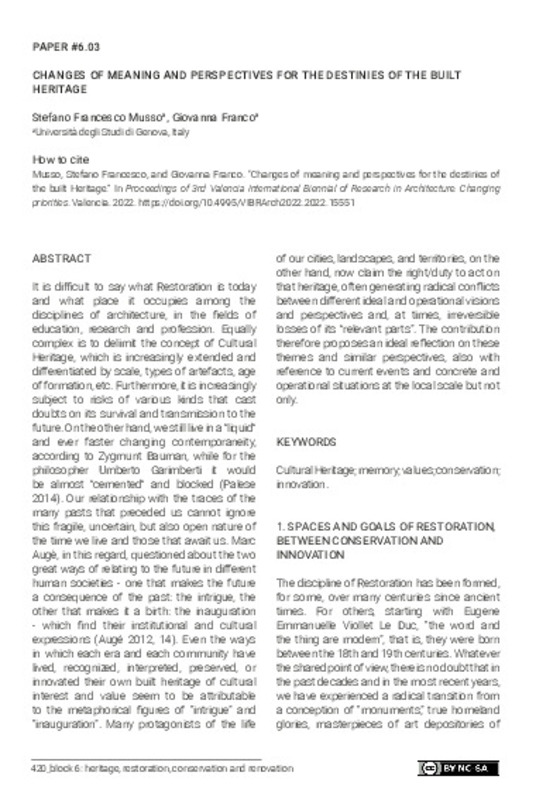JavaScript is disabled for your browser. Some features of this site may not work without it.
Buscar en RiuNet
Listar
Mi cuenta
Estadísticas
Ayuda RiuNet
Admin. UPV
Changes of meaning and perspectives for the destinies of the built Heritage
Mostrar el registro completo del ítem
Musso, S.; Franco, G. (2023). Changes of meaning and perspectives for the destinies of the built Heritage. Editorial Universitat Politècnica de València. 420-429. https://doi.org/10.4995/VIBRArch2022.2022.15551
Por favor, use este identificador para citar o enlazar este ítem: http://hdl.handle.net/10251/201013
Ficheros en el ítem
Metadatos del ítem
| Título: | Changes of meaning and perspectives for the destinies of the built Heritage | |
| Autor: | Musso, Stefano Franco, Giovanna | |
| Fecha difusión: |
|
|
| Resumen: |
[EN] It is difficult to say what Restoration is today and what place it occupies among the disciplines of architecture, in the fields of education, research and profession. Equally complex is to delimit the concept of ...[+]
|
|
| Palabras clave: |
|
|
| Derechos de uso: | Reconocimiento - No comercial - Compartir igual (by-nc-sa) | |
| ISBN: |
|
|
| Fuente: |
|
|
| DOI: |
|
|
| Editorial: |
|
|
| Versión del editor: | http://ocs.editorial.upv.es/index.php/VIBRArch/VIBRArch2022/paper/view/15551 | |
| Título del congreso: |
|
|
| Lugar del congreso: |
|
|
| Fecha congreso: |
|
|
| Tipo: |
|








